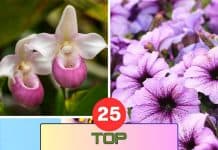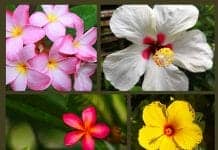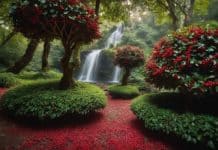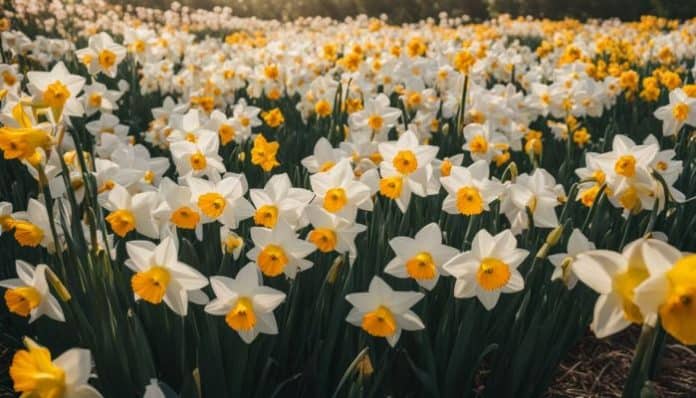
Are you an avid gardener wanting to add variety and charm to your spring garden? Did you know that the elegant narcissus flower has at least 25 species, each with unique beauty?
This blog post is packed with information about the top narcissus flowers you might consider for your garden.
Let’s explore these floral wonders together – get ready to be amazed!
Table of Contents
- Brief History and Significance of Narcissus Flowers
- Top 25 Types of Narcissus Flowers
- 1. Trumpet Daffodil (Narcissus spp.)
- 2. Large-Cupped Daffodil (Narcissus spp.)
- 3. Small-Cupped Daffodil (Narcissus spp.)
- 4. Double Daffodil (Narcissus spp.)
- 5. Triandrus Daffodil (Narcissus triandrus)
- 6. Cyclamineus Daffodil (Narcissus cyclamineus)
- 7. Jonquilla Daffodil (Narcissus jonquilla)
- 8. Tazetta Daffodil (Narcissus tazetta)
- 9. Poeticus Daffodil (Narcissus poeticus)
- 10. Bulbocodium Daffodil (Narcissus bulbocodium)
- 11. Split-Corona Daffodil (Narcissus spp.)
- 12. Wild Daffodil (Narcissus pseudonarcissus)
- 13. Pheasant’s Eye (Narcissus poeticus var. recurvus)
- 14. Paperwhite (Narcissus papyraceus)
- 15. Golden Dawn (Narcissus ‘Golden Dawn’)
- 16. Cheerfulness (Narcissus ‘Cheerfulness’)
- 17. Minnow (Narcissus ‘Minnow’)
- 18. Thalia (Narcissus ‘Thalia’)
- 19. Hawera (Narcissus ‘Hawera’)
- 20. Tête-à-tête (Narcissus ‘Tête-à-tête’)
- 21. February Gold (Narcissus ‘February Gold’)
- 22. Ice Follies (Narcissus ‘Ice Follies’)
- 23. Mount Hood (Narcissus ‘Mount Hood’)
- 24. Carlton (Narcissus ‘Carlton’)
- 25. Dutch Master (Narcissus ‘Dutch Master’)
- Meaning and Symbolism of Narcissus Flowers
- Caring for Narcissus Flowers
- Frequently Asked Questions
Brief History and Significance of Narcissus Flowers
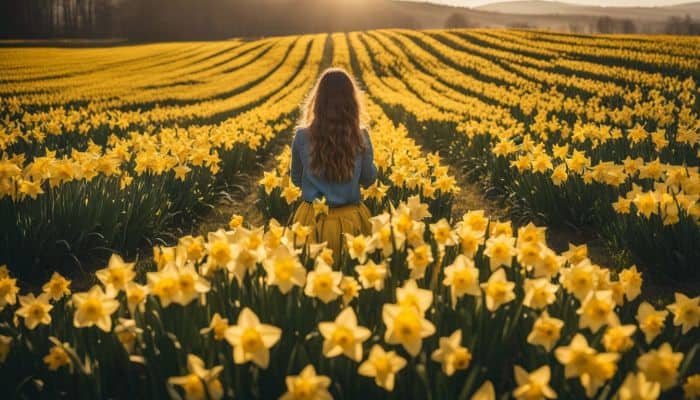
People first saw Narcissus flowers a long time ago. The name comes from the Greek word ‘narkao’[1]. That means ‘to be numb’. This is because the bulbs can harm you if you eat them. But these pretty spring plants speak of hope and new life to many.
- They are even a sign for cancer charities around the globe.
- The small country of Wales chose Daffodils as its national flower, too! Many people see it as one of Spring’s first gifts because it starts to bloom when cold Winter days end.
New buds mean a fresh start and chances for change. It speaks about rebirth and starting again in most places around Europe.
Top 25 Types of Narcissus Flowers
The diverse world of Narcissus flowers encompasses a remarkable range, from the iconic yellow Trumpet Daffodil to the delicate white Paperwhite. Varying in size and color, other varieties include Large-Cupped Daffodils[2] with robust blooms and Small-Cupped ones known for their petite elegance.
Double Daffodils stand out with their doubled petals, while Triandrus are distinguished by their dangling blossoms. Cyclamineus varieties impress with swept-back petals.
Quintessential spring bloomers like Jonquilla, Tazetta, and Poeticus make gardens come alive, while Bulbocodiums are famous for their domed flowers appearing before leaves. Unusual Split-Corona breaks away from the traditional daffodil shape, whereas Wild types inspire nostalgia.
Rare and exotic options like pheasant’s eye boast red-rimmed cups contrasting with white petals, cheery golden-yellow Golden Dawn, and Cheerfulness, which bring joy to any setting.
![]()
1. Trumpet Daffodil (Narcissus spp.)
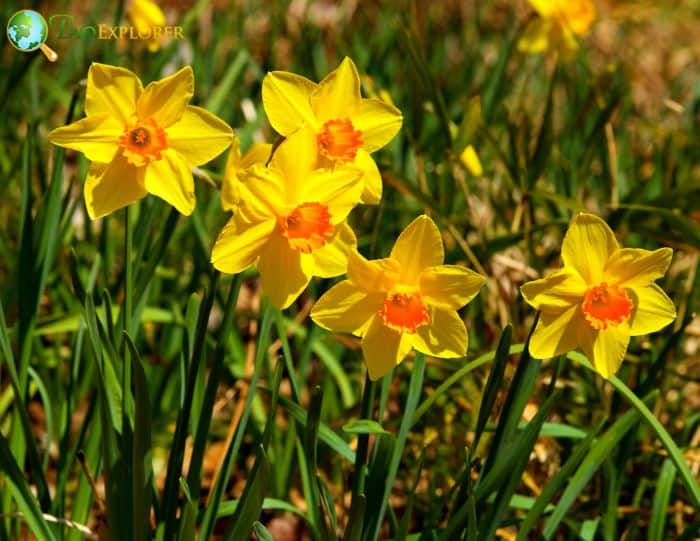
Trumpet Daffodil is a special kind of flower. It comes from the Amaryllidaceae family[2]. This family has over 50 other kinds of flowers, too. The Trumpet Daffodil is also known as Narcissus.
What makes it stand out? It’s a big, bright yellow trumpet! This part of the flower grows long and Lemon-yellow. This type does well in full sun to partial shade. So, if you want some sunny cheer in your garden or vase, think about planting these daffodils.
2. Large-Cupped Daffodil (Narcissus spp.)
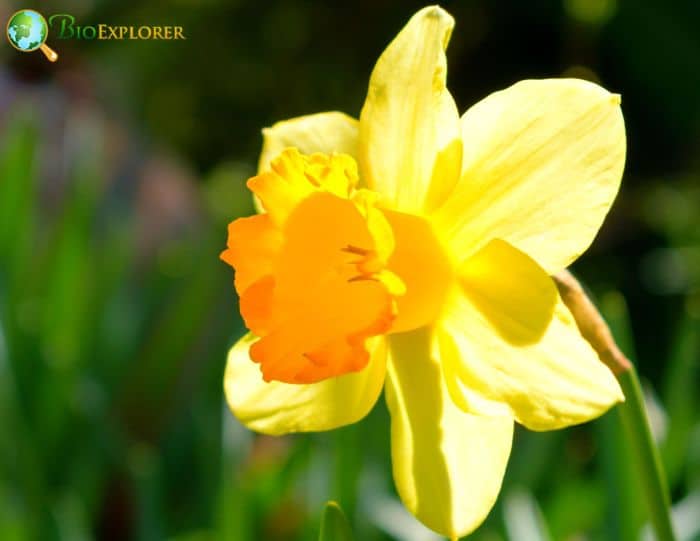
Large-cupped Daffodil stands out with white petals and a golden-yellow cup with red edges. They are elegant and add extra interest to any garden. They often give more than one stem per bulb, each carrying a big flower.
As part of their class, 14 different types of this Daffodil exist – all known for show-stopping blooms. Some differ in height or flower form, making them useful for various uses in the garden!
3. Small-Cupped Daffodil (Narcissus spp.)
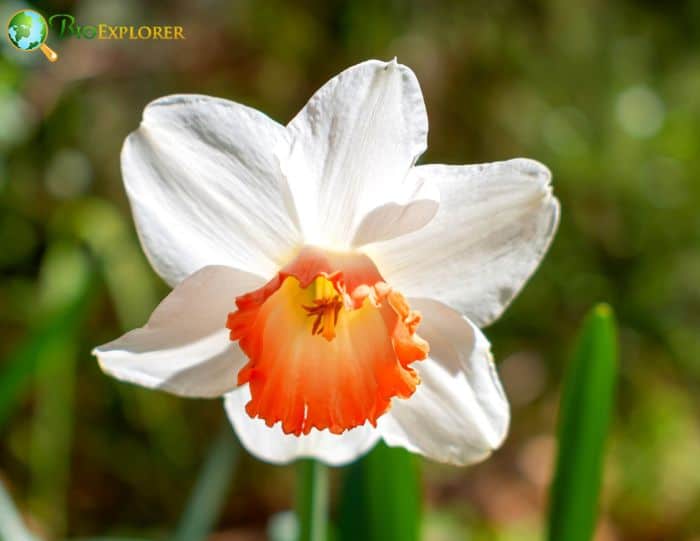
Small-cupped daffodils are beautiful flowers to look at. They come in a medium size and have a small cup or corona. This cup is not more than one-third the length of the petals. A type known as ‘Aflame’ has white petals with fiery red-orange cups.
These plants belong to the Narcissus genus, part of the Amaryllidaceae family. One of their best features is that they are easy to care for, making them great for any gardener!
4. Double Daffodil (Narcissus spp.)
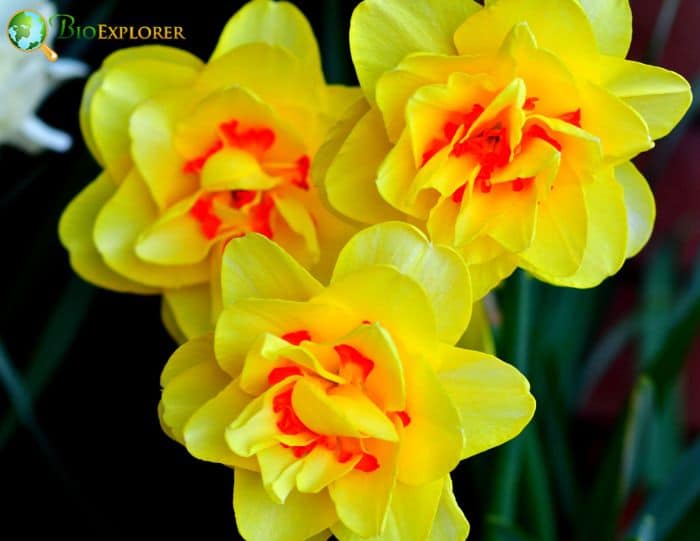
Double Daffodil is a type of Narcissus flower. It shines with bright white petals and a yellow mix in the center. They are special as they carry more petals than their cousins do. This gives them an extra-full look that lasts long after other flowers have stopped blooming.
If you love whites and yellows in your garden, think about this Daffodil. ‘Bridal Crown’ is one variety to try; it has white blooms mixed with yellow hearts. Or plant the ‘Replete’ kind for frilly centers ringed by slim white petals like flyers waving in the wind.
5. Triandrus Daffodil (Narcissus triandrus)
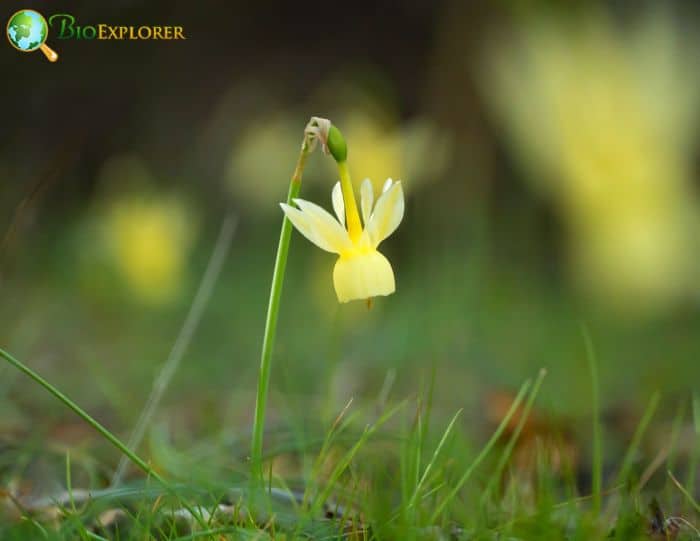
The Triandrus Daffodil, also known as Narcissus triandrus, is a prize in any garden. It’s part of the Amaryllidaceae family and stands out with its 2-3 small to medium-sized flowers per stem.
These gems bloom in mid to late Spring, adding color and charm. The scent from these blooms fills the air during their peak.
Bright green leaves make these flowers look even more striking. Ready for a surprise? These leaves can grow up to 12 inches long! Yes, dwarf flowering plants don’t let that fool you about how tall their greens get.
This is why these daffodil variants rank among the top Narcissus flowers!
6. Cyclamineus Daffodil (Narcissus cyclamineus)
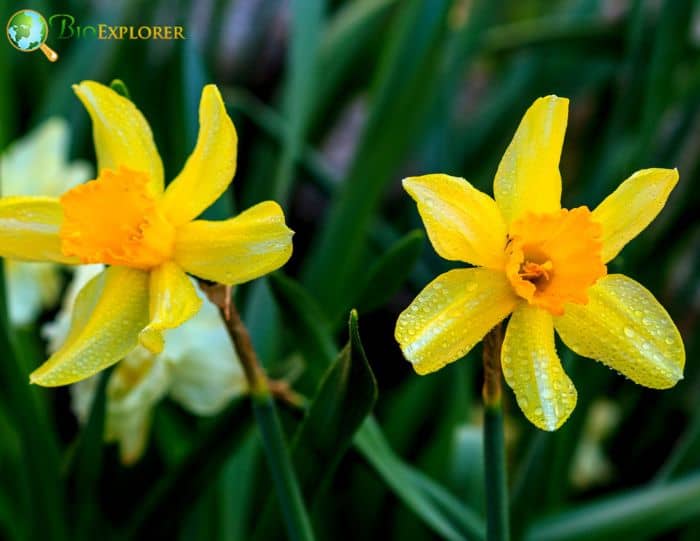
Cyclamineus Daffodil is a type of Narcissus. It has one bright yellow flower on each stem. The petals bend back from the middle part, known as the corona. These daffodils look sweet and add grace to gardens.
Some folk plant them in large groups for more impact. Popular types like Cha Cha or February Gold are used this way! They add dance-like flair to any spot they brighten up in springtime.
7. Jonquilla Daffodil (Narcissus jonquilla)
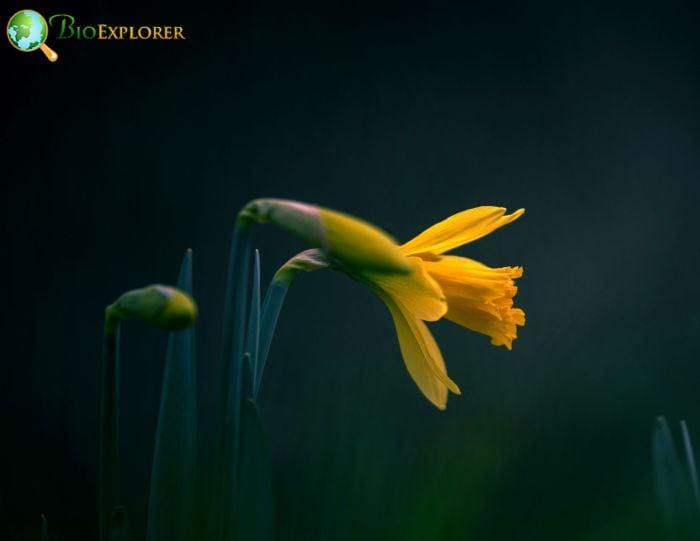
The Jonquilla Daffodil is a special flower. It comes from the Narcissus Jonquilla family. This Daffodil stands out because it smells so good. One kind, called ‘Silver Smiles’, gives you three flowers per stem! People love this Daffodil for its scent and beauty.
Its blooms make your garden look stunning in springtime.
8. Tazetta Daffodil (Narcissus tazetta)
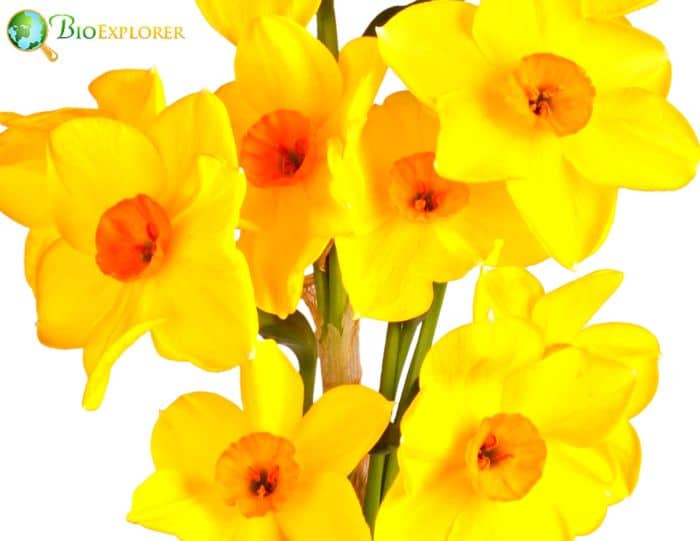
Tazetta Daffodil is a real joy in early to mid-spring. This flower loves the sun and can deal with heat and dry days. It looks great in big groups and spreads easily, too. The Tazetta has six long, petal-like parts.
They combine to form a cup or tube that looks like a small trumpet at the top. This Daffodil’s soft yellow center and white petals make it stand out in any garden!
9. Poeticus Daffodil (Narcissus poeticus)
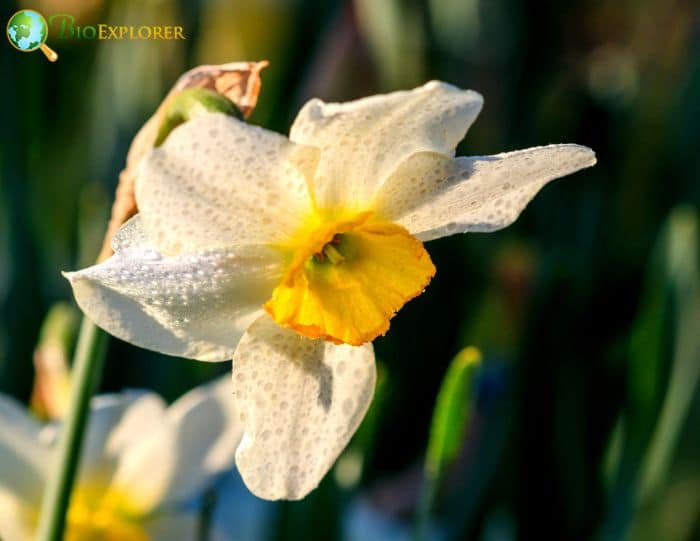
The Poeticus Daffodil is a standout flower. Known as Narcissus poeticus, too, it first grew in Central and Southern Europe. This type of Daffodil is also called the poet’s Narcissus, Nargis, pheasant’s Eye, findern flower, or pinkster lily.
Its large blooms grab the Eye with their bright white color.
Each Poeticus Daffodil bloom offers a strong smell that fills the air in your garden. Looking at this beautiful Daffodil can make your day better!
10. Bulbocodium Daffodil (Narcissus bulbocodium)
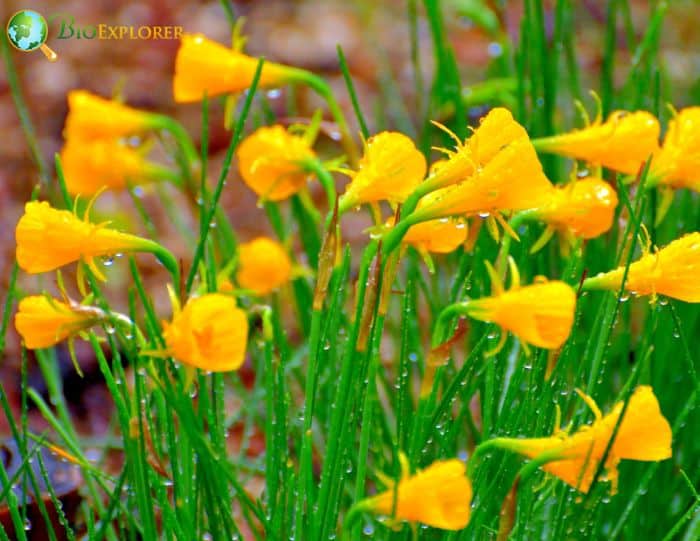
The Bulbocodium Daffodil is a special type of flower. People also call it hoop-petticoat Daffodil. It stands out with short, narrow petals and large, wide cups. They are not tall but bloom a lot, giving 3 to 5 flowers at once.
You can find them in shades like yellow, orange, or white. What’s great about these daffodils is that they don’t need much care. They grow well in lots of different places and conditions.
11. Split-Corona Daffodil (Narcissus spp.)
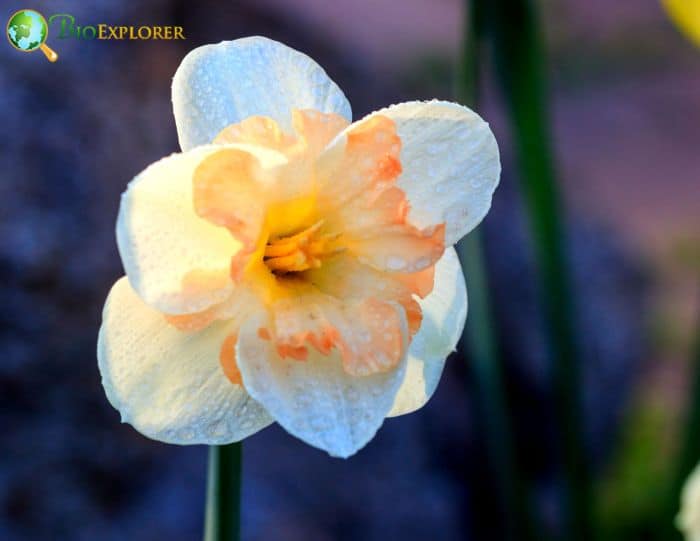
The Split-Corona Daffodil stands out in the Narcissus family. Its unique corona can be shaped like a cup, saucer, or cylinder. It starts as one piece, then splits into sections! This flower has earned its place as one of the top 25 types of Narcissus flowers because of its special crown shape and bright colors.
12. Wild Daffodil (Narcissus pseudonarcissus)
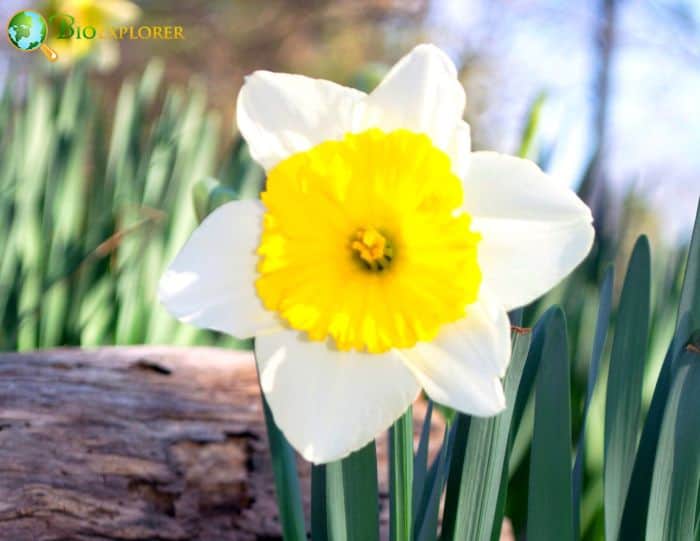
The wild Daffodil is a standout flower among the types of narcissus flowers. This two-tone beauty has pale yellow petals that hug a darker yellow trumpet in the center. Many years ago, Romans brought it to Britain, where it blooms with joy each Spring.
In Wales, people see this March birth flower as a symbol of luck. Its pretty look and special meaning make it loved by all who grow it!
13. Pheasant’s Eye (Narcissus poeticus var. recurvus)
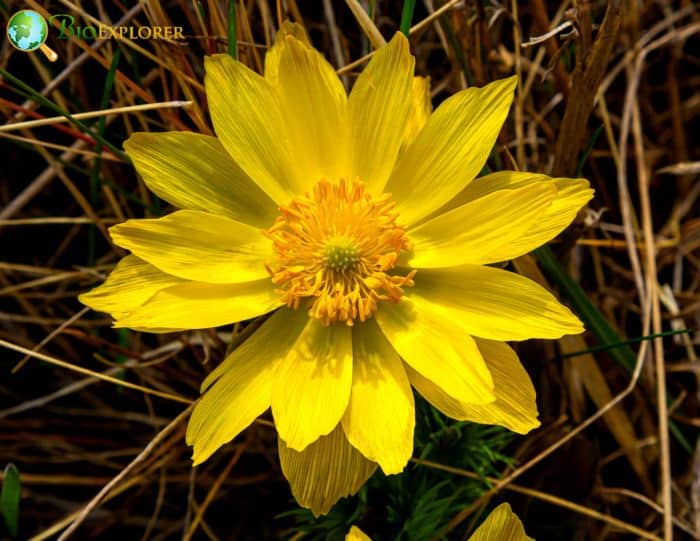
Pheasant’s Eye is a special type of Daffodil. It was one of the first types to be grown back in the day. This flower stands out because it looks like a hoop petticoat. Pheasant’s Eye falls under Division 13 in the big list of all daffodils.
You can get these flowers as bulbs to plant in your garden. They are easy to grow and beautiful to look at when they bloom. Be sure to try growing Pheasant’s Eye for a fun splash of color in your yard!
14. Paperwhite (Narcissus papyraceus)
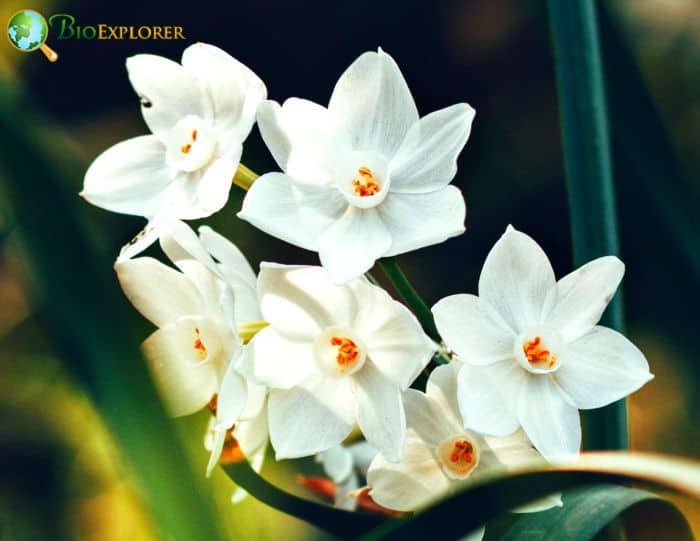
Paperwhite Narcissus is a type of Daffodil you must know about. This flower has up to ten white blooms on each stem. The blooms are small and have a sweet smell that fills the air.
Like other members of its family, Agapanthus, snowflake, and Amaryllis, it comes from the Amaryllidaceae group. Its flowers not only look pretty but also add charm with their strong scent.
Make your garden more lively by planting this delightful bloom!
15. Golden Dawn (Narcissus ‘Golden Dawn’)
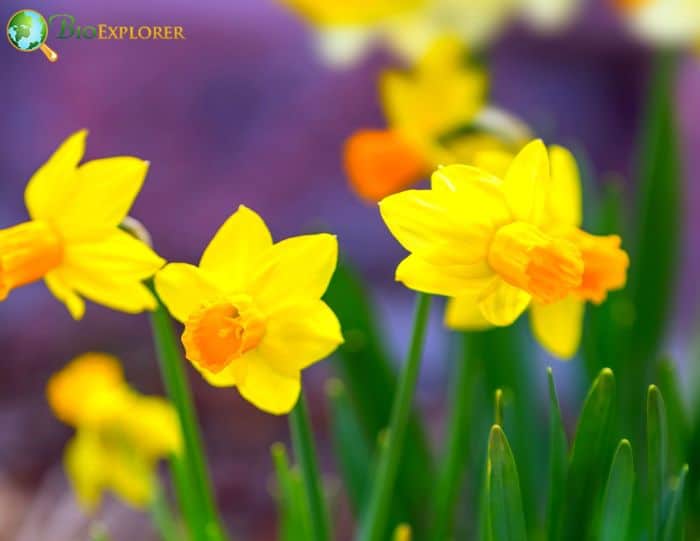
Golden Dawn is a type of Narcissus flower. It is part of Division 8 in the Royal Horticultural Society[3]. This flower grows many stems. Its shape looks like a cup. You can buy its bulbs from the Southern Bulb Co.
This group sells old kinds of flowers like Golden Dawn Daffodil.
16. Cheerfulness (Narcissus ‘Cheerfulness’)
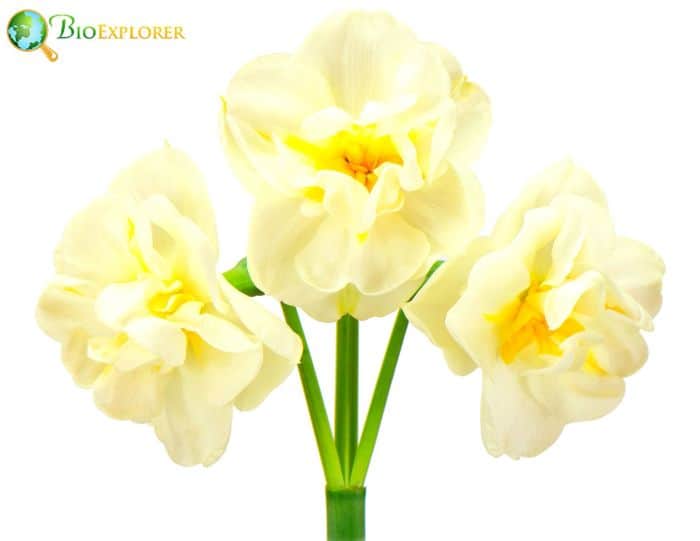
Cheerfulness is a high winner among Narcissus flowers. Its creamy-white blooms have many layers of soft petals. It gives off a sweet, musky smell that fills the air in late Spring.
The Cheerfulness sprouts up to 14-16 inches tall yearly. This Division 4 daffodil adds charm and joy to any garden!
17. Minnow (Narcissus ‘Minnow’)
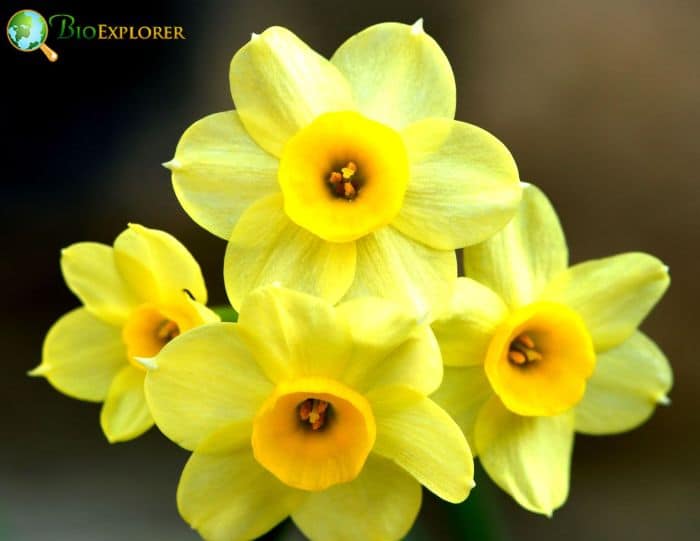
The Minnow is a small and appealing type of Narcissus. It stands 6-8 inches tall. This flower shows off 3-5 sweet-smelling blooms for each stem. Its petals have a creamy white look that pops against any garden greenery.
Minnow comes from the Tazetta group, placed in Division VIII by experts who sort flowers. Its look often makes people think of a hoop skirt tossed up in a gust of wind! The Royal Horticultural Society lists it under Division 8 due to its unique features and charm.
18. Thalia (Narcissus ‘Thalia’)
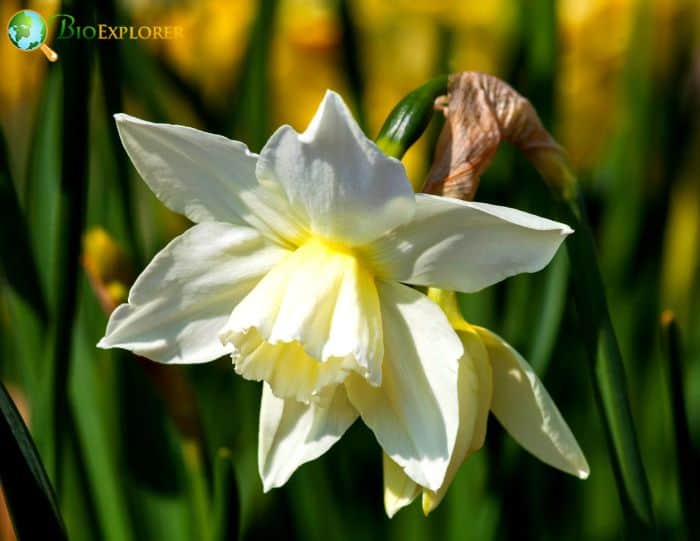
Thalia is a kind of Daffodil. It comes from the Triandrus Daffodil family. People love it for its sweet smell and strong growth. Its flowers are small, white, and shaped like trumpets.
Each stem can hold up to five beautiful flowers. The petals bend back, forming a small cup in the middle. Thalia’s flowers face outward more than other kinds in its family do.
It is one of the few daffodils that start pure white when they open.
19. Hawera (Narcissus ‘Hawera’)
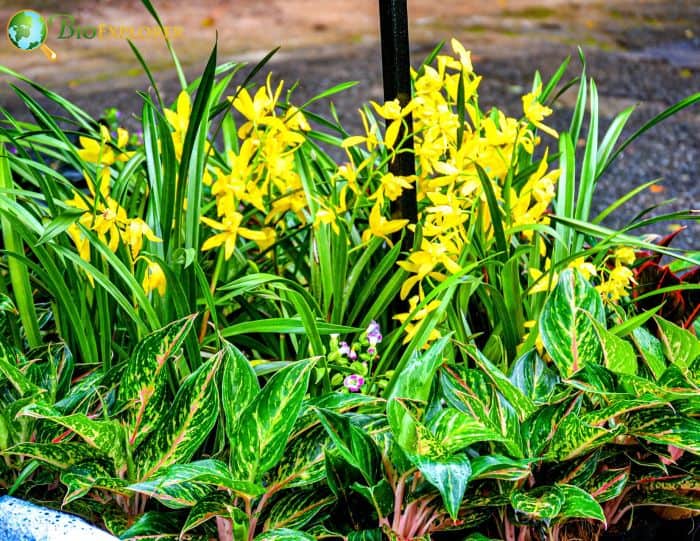
Hawera is a special kind of Narcissus flower. It’s small and has light yellow colors. A lot of times, it wins awards because it’s so pretty. This type of Daffodil is part of the Triandrus group.
They usually have one or two flowers hanging from each stem like tiny lamps. The Hawera also has a smell that you might find in perfume — sweet but with a touch of muskiness!
20. Tête-à-tête (Narcissus ‘Tête-à-tête’)
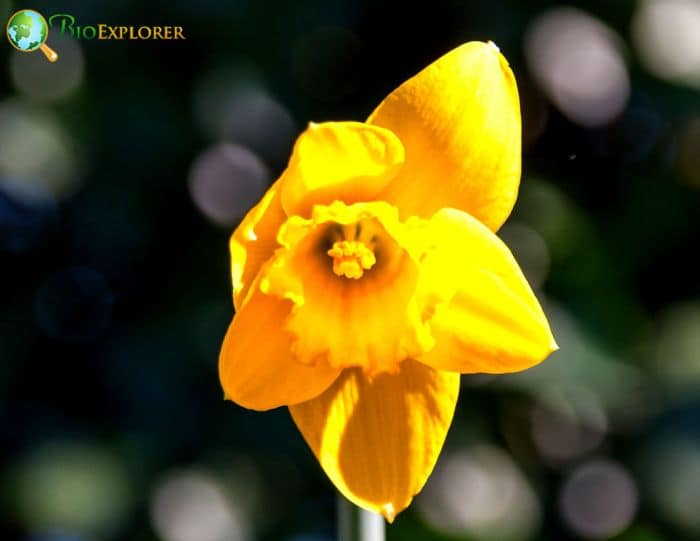
Tête-à-tête is a small and well-loved flower. It finds its place in the Cyclamineus class of Narcissus. As such, some people call it Royal Narcissus. Tête-à-tête stands out with buttercup-yellow flowers.
Its trumpets are long and narrow, while its petals bend slightly. This adds to the charm of the flowers because they do not stand up straight! People love this type for its fragrant smell, too.
Many places give it awards for its look and scent, making it very popular worldwide.
21. February Gold (Narcissus ‘February Gold’)
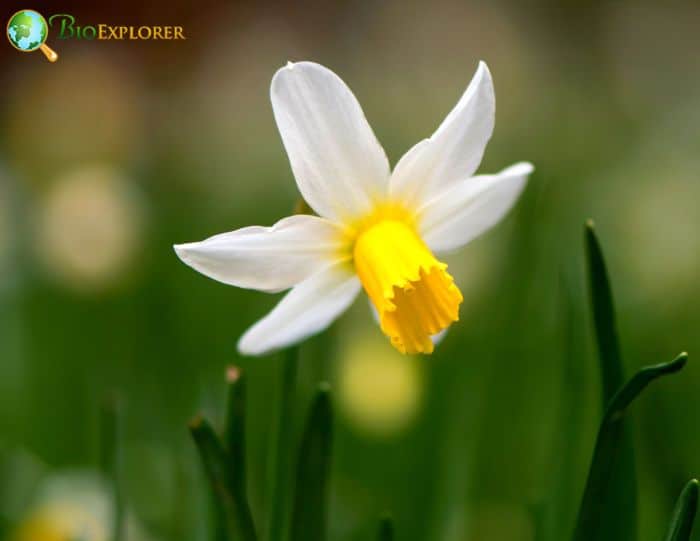
The February Gold daffodil is not like other types. Its petals don’t stick out as much. They are swept back and all yellow, making them easy to spot. Blooming starts in February, which makes sense with its name! They are grown up to 30 cm tall and show their beauty early each year.
You can trust the February Gold daffodils. They come every year and never let you down. This is your pick if you need a flower that blooms long before others do! This bright gold bloom brings joy just when winter feels too long.
22. Ice Follies (Narcissus ‘Ice Follies’)
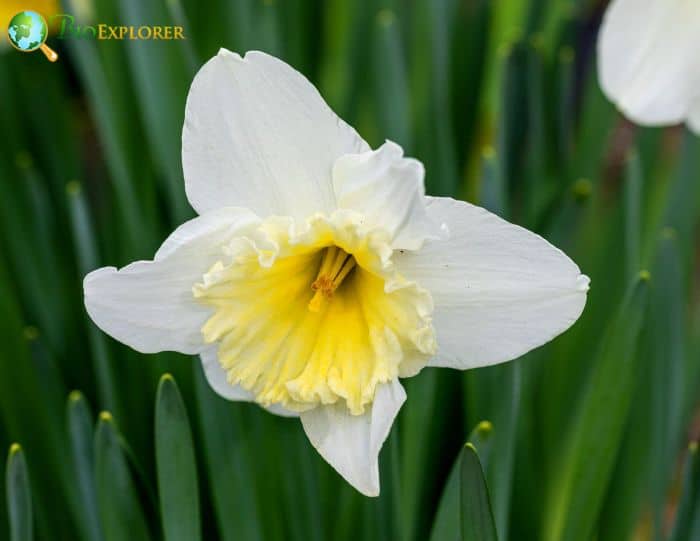
Ice Follies is a Large-Cupped Daffodil. Its flowers are big and creamy white. They can be as wide as 4 inches across. People love Ice Follies for its lovely scent. This flower grows with much power and blooms a lot.
It is ideal for nature spots and adds charm to the great outdoors on its own!
23. Mount Hood (Narcissus ‘Mount Hood’)
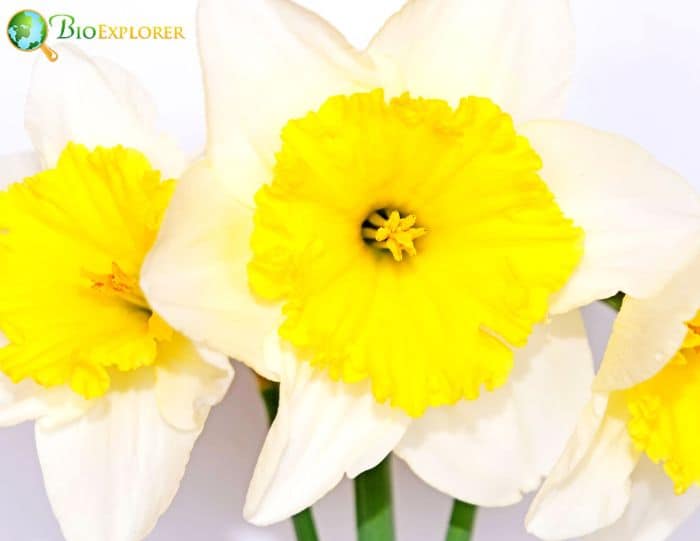
Mount Hood is a top-notch type of trumpet daffodil. It bags many awards for its beauty. Also called Narcissus ‘Mount Hood’, this flower stands out for its color. White as snow, it sets the standard for all white daffodils.
Each flower grows big, reaching 4 inches wide! Guess what? This plant gives off a soft scent. If you love pleasant smells, this one’s for you! Mount Hood belongs to the Trumpet Daffodil family and knows how to blow its trumpet!
24. Carlton (Narcissus ‘Carlton’)
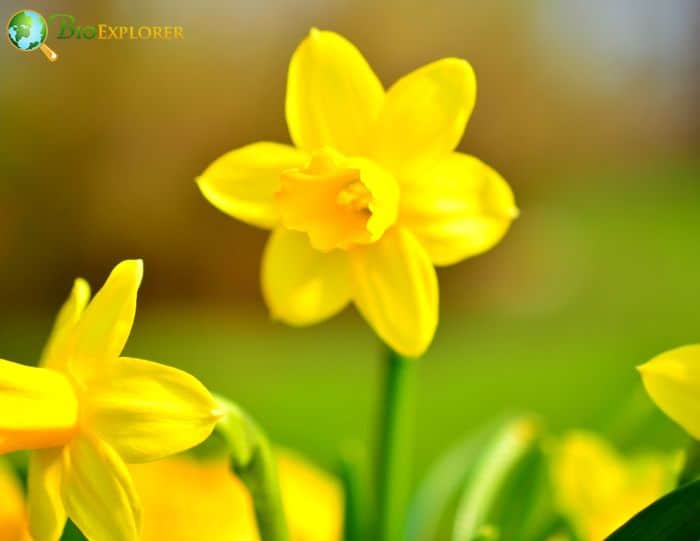
Carlton is a type of Daffodil with very large flowers. These flowers are golden-yellow and have a sweet smell like vanilla. It has won many awards for its beauty. Many people plant it worldwide, making Carlton the most planted type of Narcissus.
25. Dutch Master (Narcissus ‘Dutch Master’)
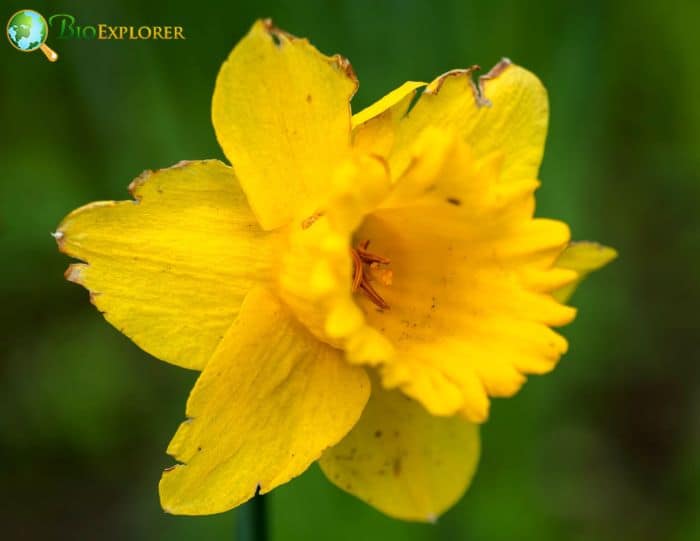
Dutch Master is a beautiful type of Narcissus flower. It has large yellow flowers, about 4 inches across. If you love the color gold, this flower is for you.
This Narcissus blooms mid-spring and gives off a lovely scent. Many see the Dutch Master as an ‘improved’ form of the King Alfred-type daffodil. It stands out from other narcissus types with its big, golden-yellow bloom.
Meaning and Symbolism of Narcissus Flowers

Often associated with rebirth and new beginnings, Narcissus flowers symbolize the arrival of Spring. These bright blooms are also tied to self-esteem and self-love due to Greek mythology’s tale of a young man named Narcissus who fell in love with his reflection.
Additionally, their undeniable beauty has made them symbols of attraction. The Narcissus carries other symbolic meanings depending upon cultures across the world, making them not only beautiful but richly meaningful flowers as well.
![]()
Rebirth and New Beginnings
Narcissus flowers link to fresh starts. They bloom in Spring, the season of renewal. Their bright petals open up and show the joy of a new cycle. People love Narcissus for this meaning.
The idea of having a fresh start gives people hope. Also, it puts light on their faces when they feel low or stuck. Each time you see a blooming Narcissus flower, think about how much more beautiful life can be with every chance to begin again.
Self-Esteem and Self-Love
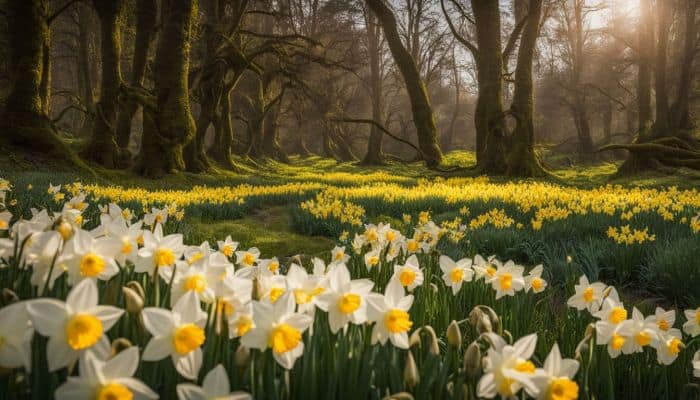
The Narcissus flower stands for self-love and self-esteem. It is a mindful symbol of learning to love oneself. This flower also reminds us that we are valuable and worth it. People often gift others with these flowers to share the message of believing in their own values.
So, every time you see a Narcissus flower, let its beauty inspire self-respect and kindness towards yourself!
Beauty and Attraction
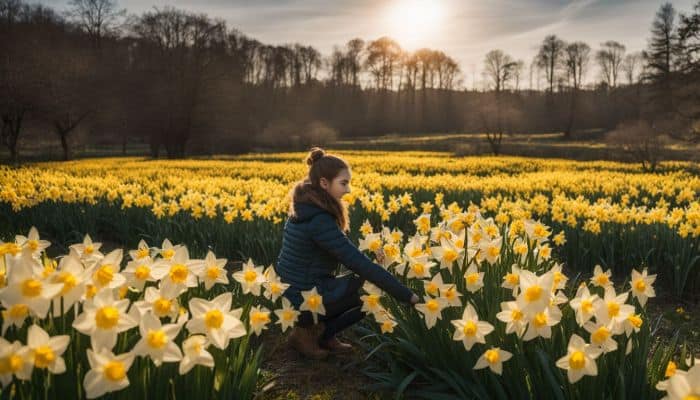
The Narcissus flower is a key figure for beauty and attraction. Its eye-catching charm adds allure to any garden or floral design. Often, people find the Narcissus irresistible due to its striking colors and shapes.
In many cultures, this flower symbolizes love and grace. For example, Prophet Mohammed praised its sight-giving gift and stunning features. In Persian poetry, too, it’s an image of beautiful eyes.
Hence, representing excellent visual appeal in your gardens.
Other Symbolic Meanings
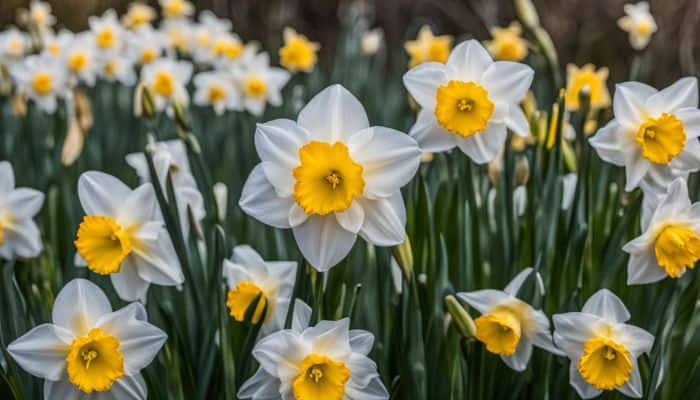
Narcissus flowers hold many messages. They tell us to be happy and clear in our thoughts. Some see these blooms as signs of good luck. But, a few others link them with bad events or focus on self-love taken too far.
In the East, these bright flowers mean wealth and are seen as good omens for the future. This makes Narcissus more than just pretty petals.
Narcissus flowers are considered one of two December Birth Flowers; the other December flowers are hollies.
Caring for Narcissus Flowers
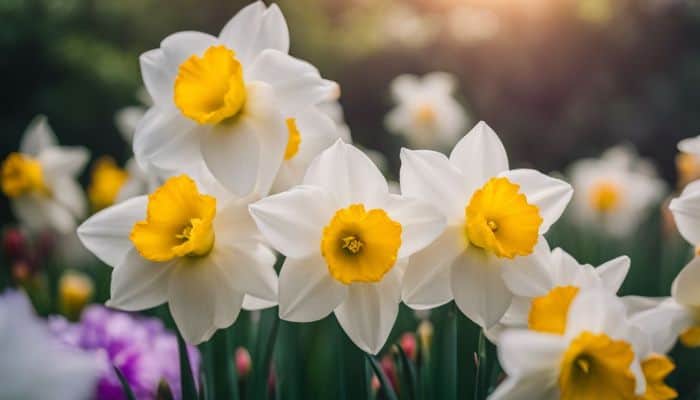
From choosing the perfect planting location, understanding the watering and fertilizing essentials, to tackling common pests and diseases, get ready to delve into comprehensive care instructions for flourishing Narcissus flowers.
Whether you’re a novice gardener or an experienced horticulturist, join us as we unfold proven tips on nurturing these captivating blooms!
Planting and Growing Tips
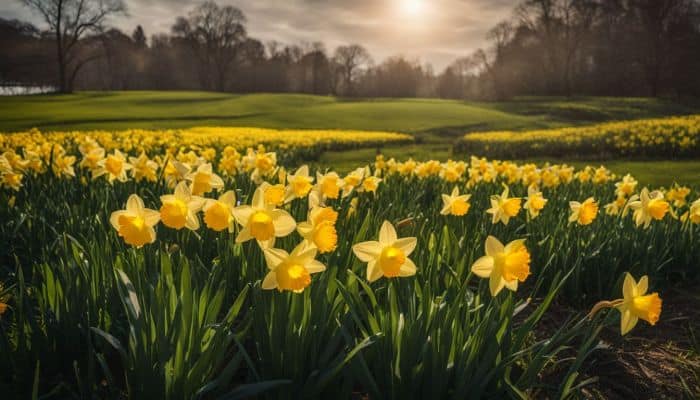
Here’s how you can plant and grow Narcissus flowers:
- Choose a spot that gets sun or partial shade.
- Ensure the soil drains well, as Narcissus flowers do not like wet feet.
- Prepare the soil with compost or manure to feed the bulbs.
- Dig a hole about three times the size of the bulb.
- Place bulbs about six inches apart in the hole.
- The top of the bulb should be facing up and be placed about three inches deep into the soil.
- Cover it up, give it some water, and wait for Spring!
- Once they start growing, water them regularly.
- Do not cut back the leaves until they turn yellow so the flower returns next year.
- Fertilize with bulb food after blooming is done for healthier bulbs next season.
Watering and Fertilizing Guidelines
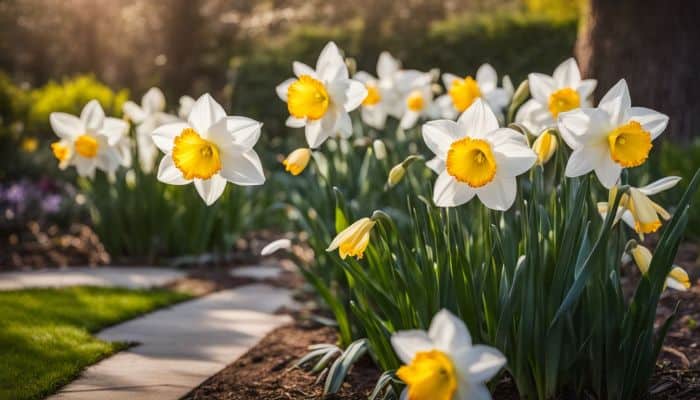
Growing narcissus flowers requires the right care. Here is how you feed and water them:
- Water your flowers well when they are growing.
- On days with no rain, give them an extra drink.
- But be careful; too much water is bad for them.
- Never let water sit around your flowers; it can harm them.
- Choose a high spot for planting to avoid pools of water.
- Use good food or fertilizer for your flowers.
- Feed once in early Spring and again as flowers fade.
- But remember, overfeeding can be as bad as underwatering!
Dealing with Common Pests and Diseases
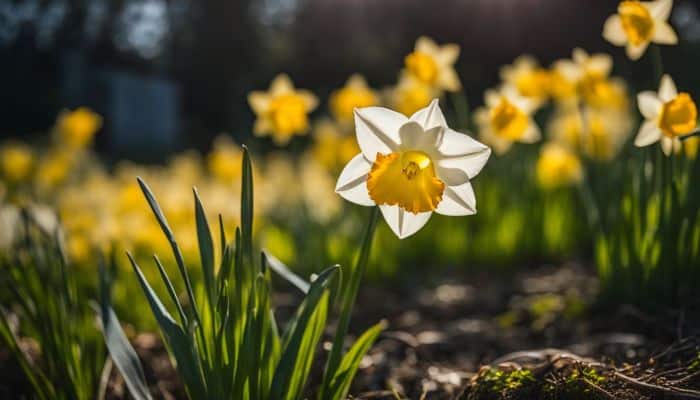
Look out for certain bugs and diseases in narcissus flowers. They may harm your plant.
- Aphids are small bugs. They can give viral diseases to your flowers.
- Watch out for mites and flies, too. These bugs can make open wounds on your flowers.
- Look under the leaves and near the roots. You might see fly, mite, or nematode babies there.
- Some narcissus plants no longer exist because of these pests and diseases.
- Don’t over-water your paperwhite narcissus plants! Too much water can hurt them directly.
- Use safe bug sprays or soaps to keep pests away.
- Clear out dead leaves and stems regularly to stop disease.
- Check often for signs of rot or mold on bulbs before and after planting.
- Save healthy bulbs only at the end of each season to prevent disease from new year’s plantings.
Harvesting and Storing Tips
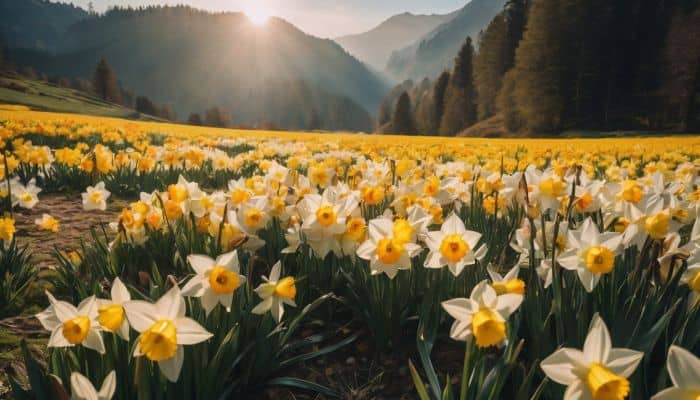
Cut narcissus flowers when the buds open. Busy gardeners can gather their lovely blooms in the cool morning hours. Make sure to use a sharp knife or shears for this job. Hold the stem near its base and give it a quick cut.
Deadheading and bulb storage
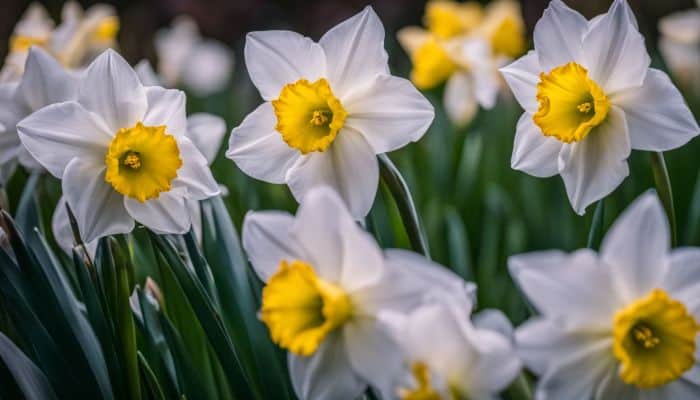
Taking care of narcissus flowers includes deadheading and proper bulb storage.
- Deadhead the Narcissus by removing faded blooms. This process helps the plant focus its energy on making more flowers than seeds. However, remember this step is optional for narcissus flowers.
- Snip off the spent flower and its stem at the base with a sharp pair of garden clippers. Avoid removing any leaves, as these continue to feed the bulb after flowering.
- Allow the foliage to die naturally until it is yellow or brown before each trim. The leaves should look lifeless but help feed the bulb for next year’s bloom.
- Clean your bulbs before storage. Brush off loose dirt from them and let them dry for a few days in a warm, well-ventilated place.
- Throw away any bulbs that show signs of disease, such as rot or mold. Store healthy bulbs in a paper bag or mesh sack filled with peat moss to retain some moisture.
- Strength and beauty for next year are built on food reserves stored in daffodil bulbs this year, so don’t starve them!
- Label your bag with the type of Narcissus it contains, and then store it in a cool but not freezing location over winter, ready for planting in autumn.
Frequently Asked Questions
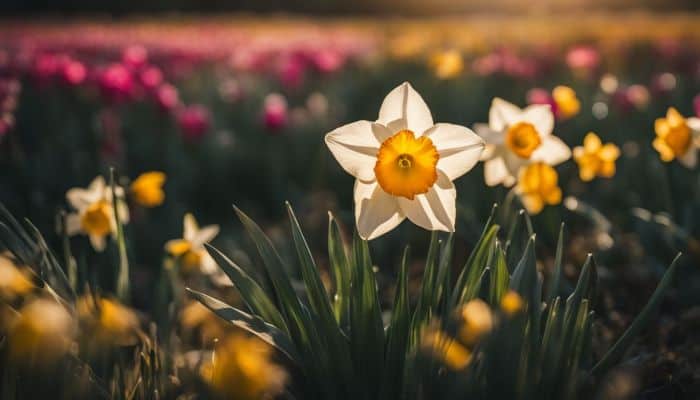
We’ll address common questions about Narcissus flowers, including their distinct aroma, differences between daffodils and narcissi, potential risks to pets, the lifespan of blossoms, and more.
Are Daffodils and Narcissus the same thing?
Yes, daffodils and Narcissus are the same things. Both names speak of the same flower type. The name “Narcissus” is what scientists use for these plants. It is their species name. But most people call them “daffodils“.
So, we can say that all daffodils are part of the Narcissus group. But not all flowers in this group are called daffodils. Some have other names like jonquils or paperwhites.
This fact might seem confusing initially, but it’s simple to understand when you know it works as family names do for humans! With over 50 types of Narcissus, it’s no wonder they go by different common names depending on where and who you ask around the globe!
Why are daffodils called Narcissus?

Daffodils come from the Narcissus family. They are named after a man in an old Greek story. This man’s name was Narcissus, and he loved to look at his face in river water! The flowers are found by rivers, too – that is why we call them Narcissus.
Another reason for this name is that it comes from a Greek word, which means ‘to make numb’. The strong smell of daffodils can make you feel dizzy or numb if you sniff too much!
What does a narcissus smell like?

A narcissus has a sweet, pleasing scent. It fills the air with the smell of Spring. Some types have a strong smell that’s just like honey. Others give off a soft and delicate scent.
This is why many people love to use them in perfume making or as cut flowers for their homes.
What eats narcissus flowers?
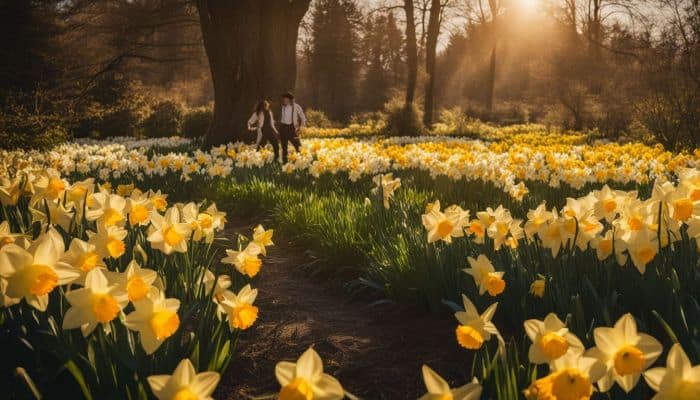
Squirrels have a big love for narcissus bulbs. They dig them up and eat them. This often hurts the flower’s growth. Other rodents also like to snack on these bulbs.
To stop this, plant your bulbs deep in the ground. Another way is to keep those pests from your garden area altogether. A wire mesh can help with that.
Do daffodil flowers have seeds?
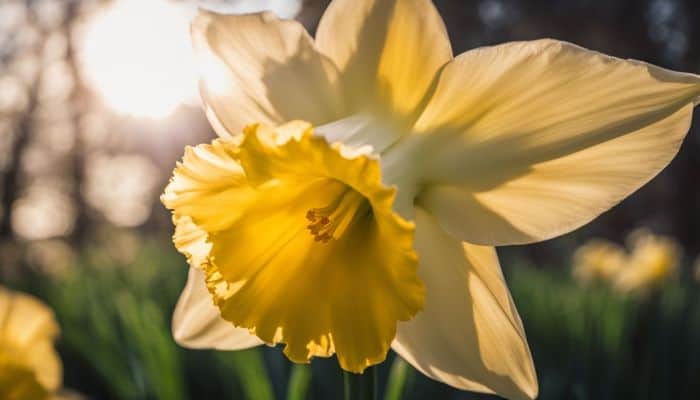
Yes, daffodil flowers have seeds. They form after the flower gets pollinated. A seedpod grows just behind the bloom. You can see these green pods once the flowers have bloomed. Each of these pods can house up to 25 seeds! If you want new plants, you can pick and grow these seeds.
Is narcissus flower poisonous to cats?
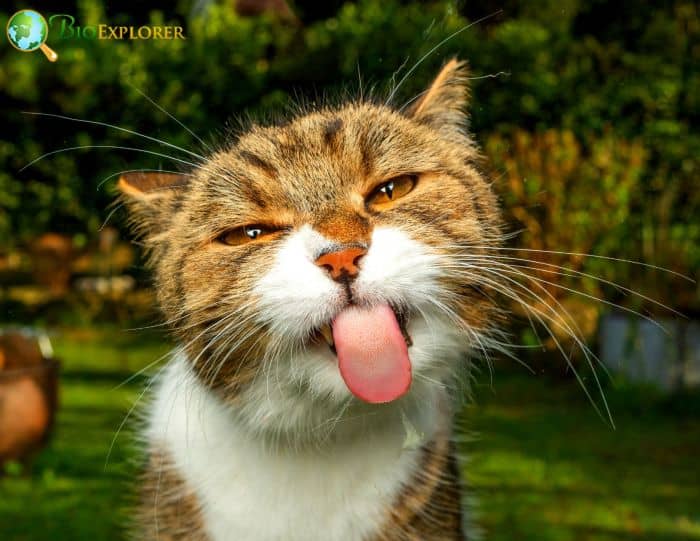
Yes, narcissus flowers are not safe for cats. These flowers carry a toxin named lycorine. A cat can get sick if it eats part of this flower. Common signs include throwing up.
Eating daffodils may sometimes lead to serious cat health problems. Keep these beautiful but harmful blooms away from your furry friends!
How long do narcissus flowers last?

Narcissus flowers stay fresh for 4-5 days after blooming. Some types can keep their look much longer if the weather is cool. If you plant different kinds, your garden will have lovely blooms from six weeks to six months.
You will see more and more flowers each year if the bulbs multiply and grow well. Let the flowers fade and die naturally after blooming ends.
Enjoy the beauty of Narcissus flowers in your own garden. They brighten up the Spring and bring joy with their colors and shapes. Care for them well, and they will grow strong.
Share this joy by giving these wonderful flowers as gifts to family and friends!



